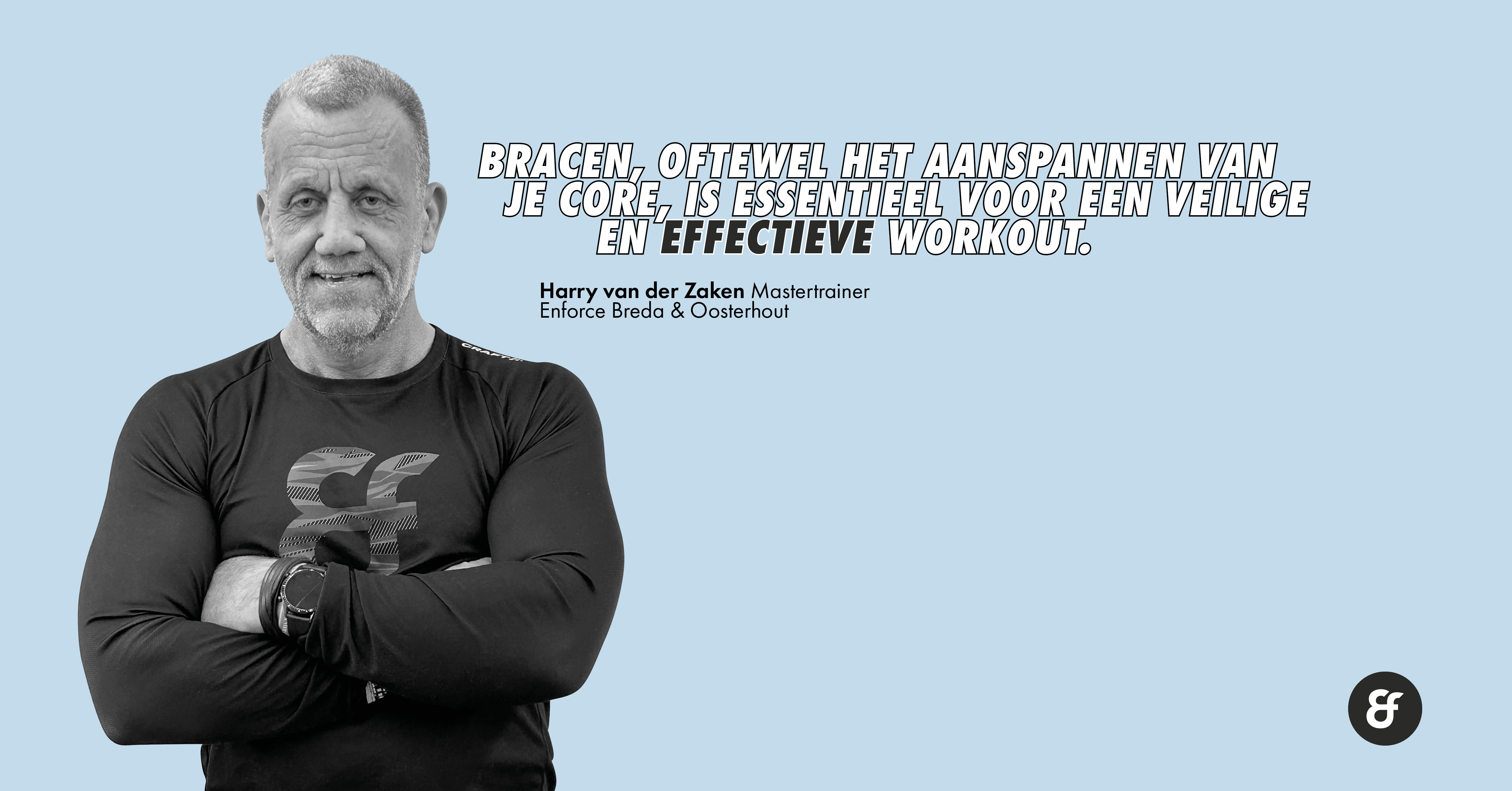As a master trainer, I always pay attention to whether people brace properly during their strength training. The question often arises why this is so important. Bracing, or tightening your core, is essential for a safe and effective workout. In this blog I explain what bracing exactly is, why it is so important, and how to do it correctly.
What is Bracing?
Bracing means tightening the muscles in your torso, including the abdominal, back and pelvic floor muscles. This provides a stable base and protects your spine during heavy exercises such as squats, deadlifts and overhead presses.
Benefits of Bracing
Increased Stability: A properly engaged core keeps your torso stable, which is essential for maintaining proper posture and protecting your spine during heavy lifts.
Better Power Transfer: With a stable core you can transfer the force you generate from your legs and arms more efficiently, allowing you to lift more weight.
Prevention of Injuries: By properly engaging your core, you reduce the risk of injuries to your lower back and other vulnerable areas.
Improved Posture: Proper bracing technique helps maintain a neutral spinal position, which is important for correct posture and preventing compensation patterns.
You are only as strong as your weakest link
The saying “you are only as strong as your weakest link” especially applies to bracing during strength training. If you do not engage your core properly, the following problems can occur:
1) Loss of Stability: A poorly engaged core leads to instability, which can result in incorrect posture and an increased risk of injury.
2) Reduced Strength Output: Without a strong core, the force you generate in your legs or arms cannot be transferred effectively, limiting your ability to lift weight.
3) Overloading Other Muscles: A weak core forces other muscles to compensate for stability, which can lead to overload and injuries.
4) Back problems: Poor core engagement can lead to poor spinal alignment, often resulting in back problems and even serious injuries such as herniated discs.
How to Brac Correctly?
Here are some steps to bracing correctly:
1) Breathing: Breathe deeply into your stomach (not into your chest) so that your abdominal muscles expand.
2) Tighten: Tighten your abdominal muscles as if you were preparing to be punched in the stomach. This creates intra-abdominal pressure that helps stabilize your spine.
3) Pelvic floor: Tighten your pelvic floor muscles as if you were trying to prevent urination. This helps with overall core stabilization.
4) Back: Keep your back in a neutral position, not excessively arched or hollow. This ensures the best biomechanical posture.
By following these steps and exercising consistently, you can develop a strong, stable core that will help you perform your strength training safely and effectively. Remember: you are only as strong as your weakest link, so make sure your core isn't a weak link!
Harry van der Zaken
Enforce Master Trainer
harry@enforce.nl
Schedule a free coaching session or take the online membership test
Does this sound good and are you also ready for a fitter & healthier life? Then schedule a free coaching session now Join me or one of the other master trainers! 100% risk-free, the first step has never been easier!
Are you still in doubt? Then take the no-obligation online membership test: 6 short questions (only 1 minute to complete) to discover whether Enforce suits you!


